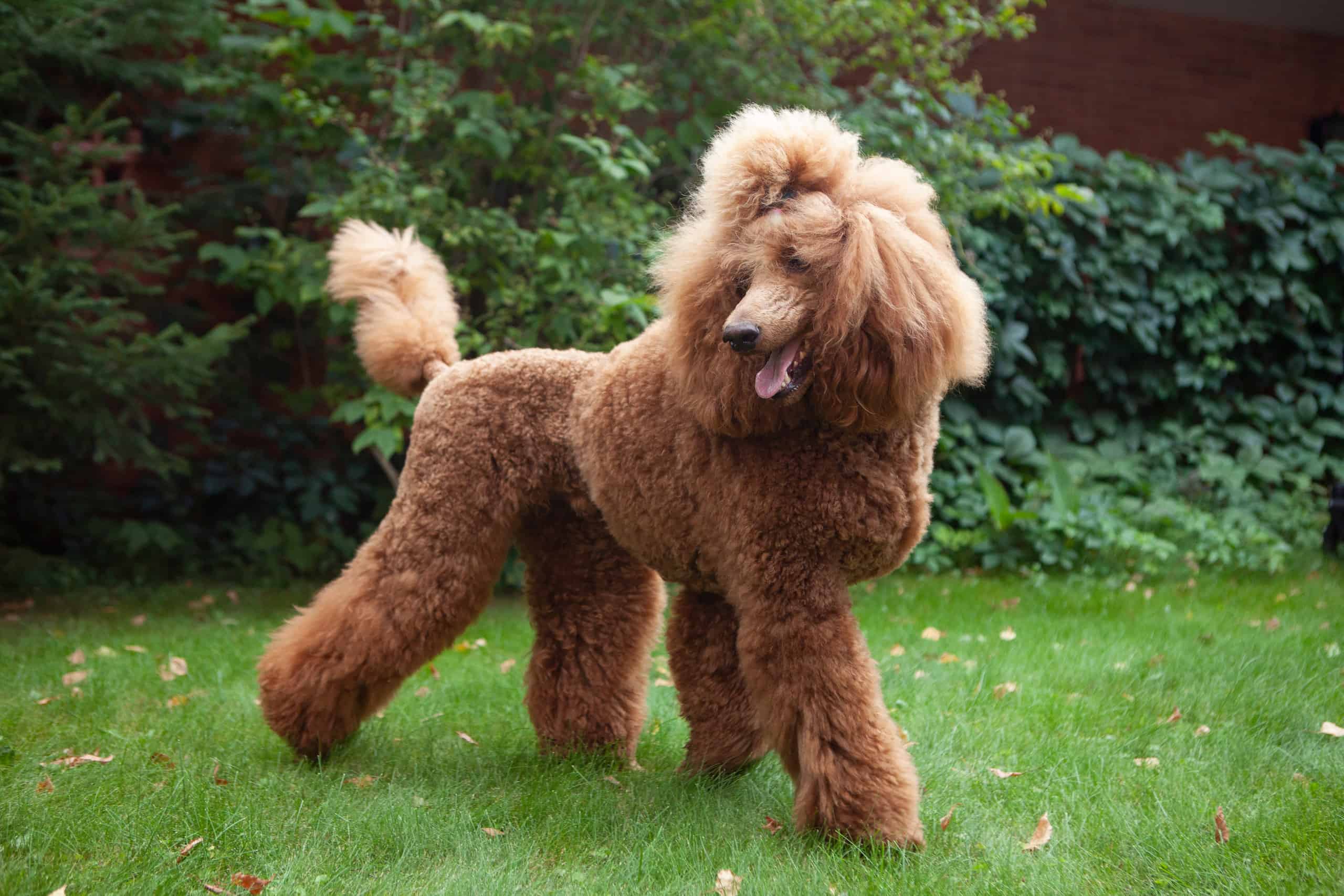Poodles are among the most well-known breeds in the world. While these dogs are notorious for their appearance, intelligence, and athleticism, they have other talents. For example, these dogs were originally bred to work as water retrievers. Owners would use them to collect ducks and other birds after they were shot and bring them back to their masters. In fact, some waterfowl hunters still use poodles to retrieve their kills to this day. If you have ever seen the infamous poodle haircut, it serves a purpose. It’s not just for show. Breeders wanted to create a more efficient swimmer, but shaving all their hair made these dogs vulnerable to the cold. Therefore, they chose to leave puffs of hair around the upper torso and joints, protecting vital organs. But what poodle colors are there? This article will rank these colors from rarest to most common.
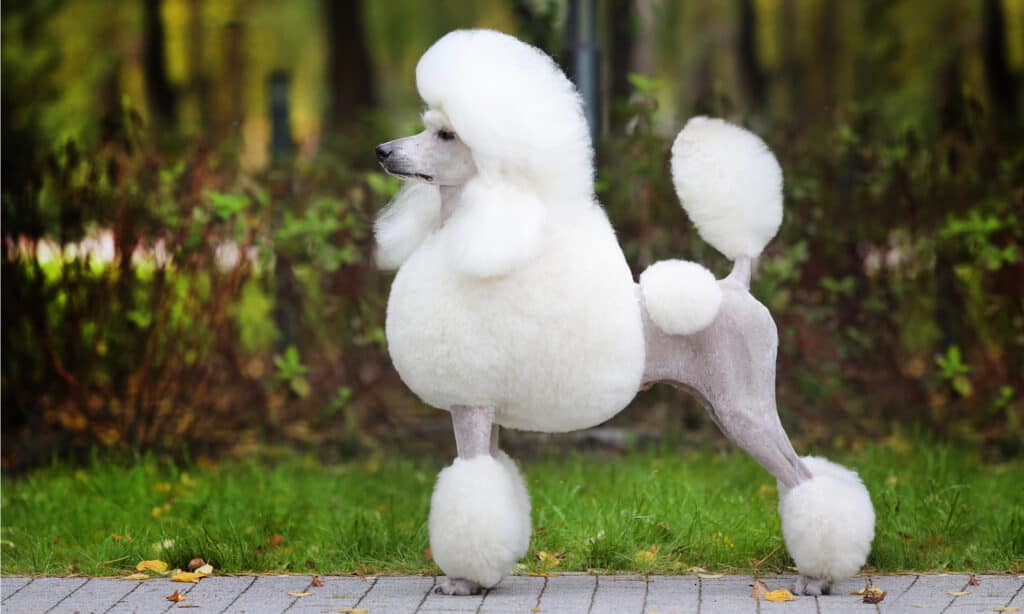
Some waterfowl hunters still use poodles to retrieve their kills to this day.
©Dulova Olga/Shutterstock.com
1. Apricot
The rarest poodle color is apricot. A recessive gene causes this unique color, which appears light red, almost bordering on cream. Researchers believe that apricot poodles were the last to be developed due to certain characteristics. The first apricot poodle appeared in 1898, called Sowden Yellow Gall.
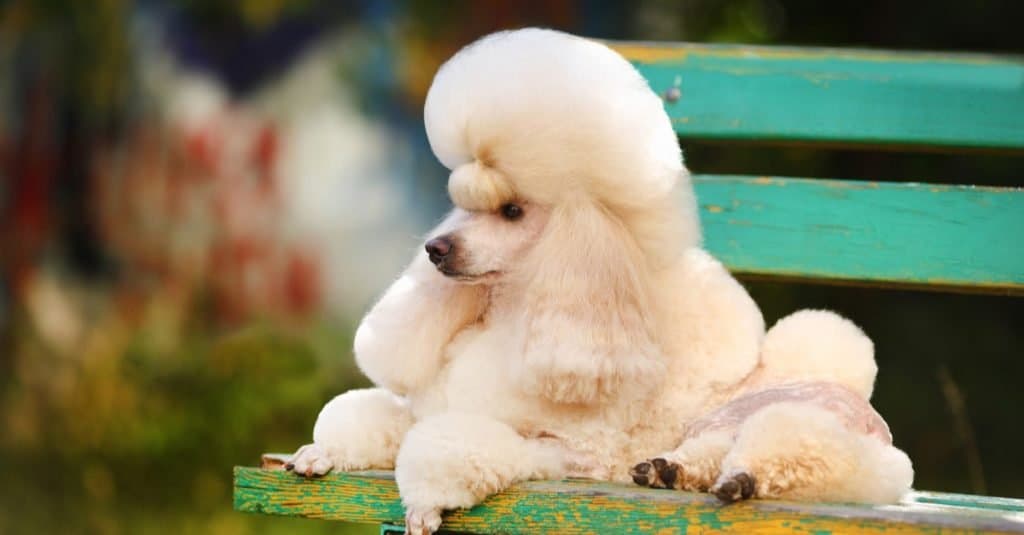
The rarest poodle color is apricot.
©Dulova Olga/Shutterstock.com
2. Red
The second rarest poodle color is red. The red color can fade over time, similar to the black poodles that tend to fade to silver as they age. Unfortunately, it may be difficult to distinguish red from apricot poodles as their coloring is very similar. However, researchers found that the recessive gene in red poodles differs from the one found in apricot poodles. This recessive gene has been nicknamed Rufus.
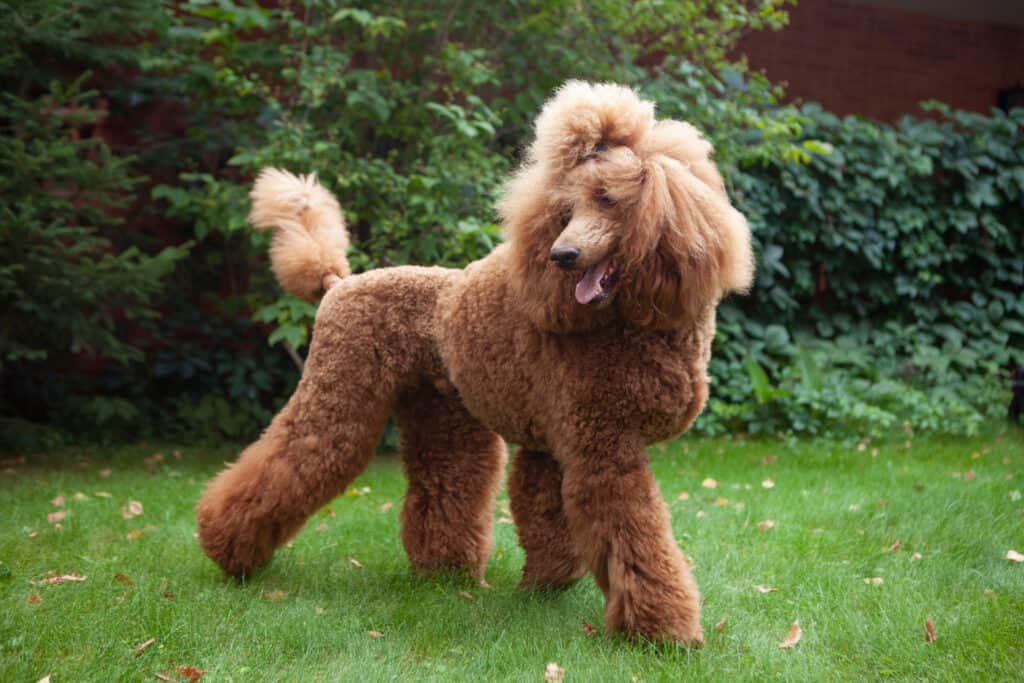
The red color can fade over time, similar to the black poodles that tend to fade to silver as they age.
©Diana Kellior/Shutterstock.com
3. Cream
Cream poodles are also extremely rare as it’s not just a recessive gene that causes their coloring; it is also specific breeding. For example, their unique coloring results from mixing the red gene with the fading genes that occur in silver poodles. Owners often believe their apricot or white poodles are cream, but chances are they are not because these dogs are so rare. It is very common to miscategorize other colors as cream.

Cream poodles are also extremely rare as it’s not just a recessive gene that causes their coloring.
©iStock.com/Lumppini
4. Sable
While sable isn’t a single color, it describes poodles of various colors with black-tipped fur. This coloring develops from a dominant gene, but sable-colored poodles are quite rare. This color is really hard to distinguish because it fades as the dog ages, so the black tips may not even be present in adult poodles. Furthermore, so little is known about the sable gene, so it is difficult to breed.

While sable isn’t a single color, it describes poodles of various hues with black-tipped fur.
©iStock.com/Jovan Baturan
5. Cafe au Lait
Café au Lait poodles result from a fading gene in brown coats. This color lacks silver but is more of a dark cream hue. The best way to describe their coloring is coffee with milk—however, the color changes as the dog ages, similar to most faded coat colors.
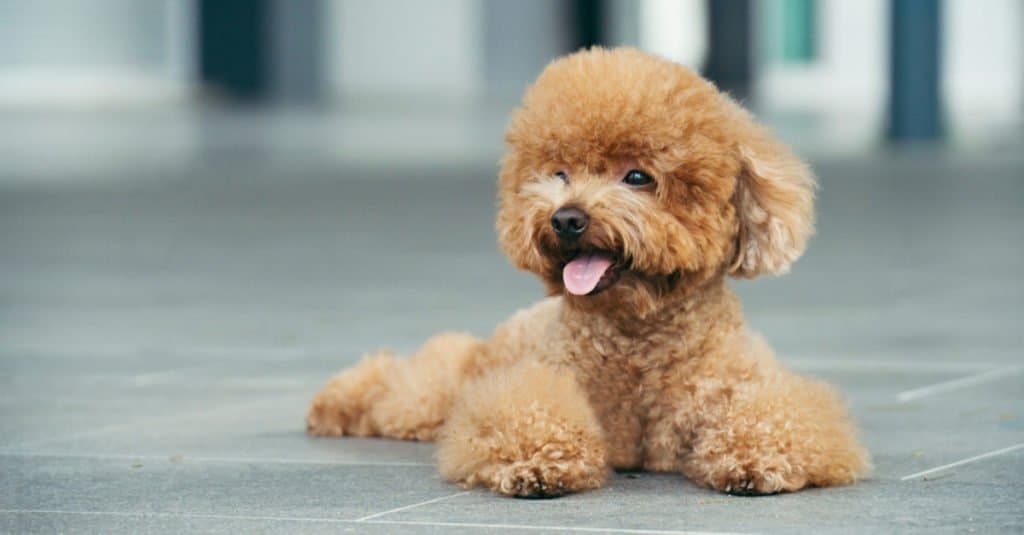
The best way to describe their coloring is coffee with milk.
©Lim Tiaw Leong/Shutterstock.com
6. Silver Beige
Breeding a silver-beige poodle can be quite complicated. For example, to get this color, you must mix two blue or silver poodles that also carry the brown coat gene with a fading gene, which is recessive. The result is a litter of silver-beige pups. However, don’t let the puppies fool you. They are born black or dark brown, but their coloring will fade as they get older. The best way to identify these poodles is beige coloring with silver fur spattered in between.
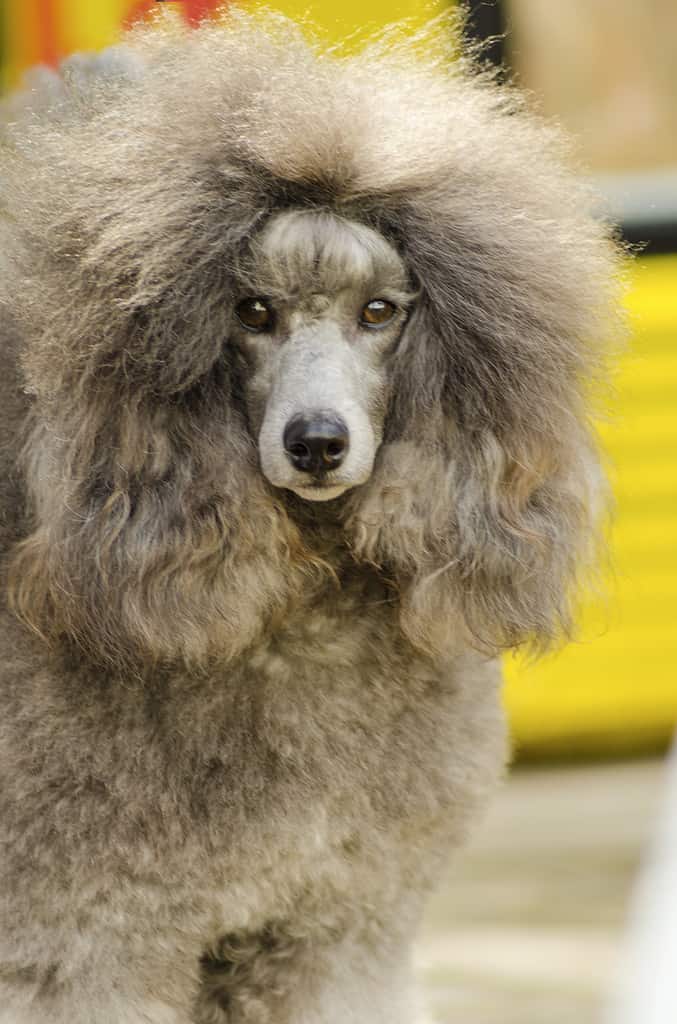
The best way to identify these poodles is beige coloring with silver fur spattered in between.
©iStock.com/f8grapher
7. Silver
Silver poodles are one of the more popular colors, but they are quite hard to find because it is not easy to breed this color, as it requires two recessive genes. These poodles are born with black coats, but the two recessive genes cause their coats to fade as they age, usually within the first or second year.
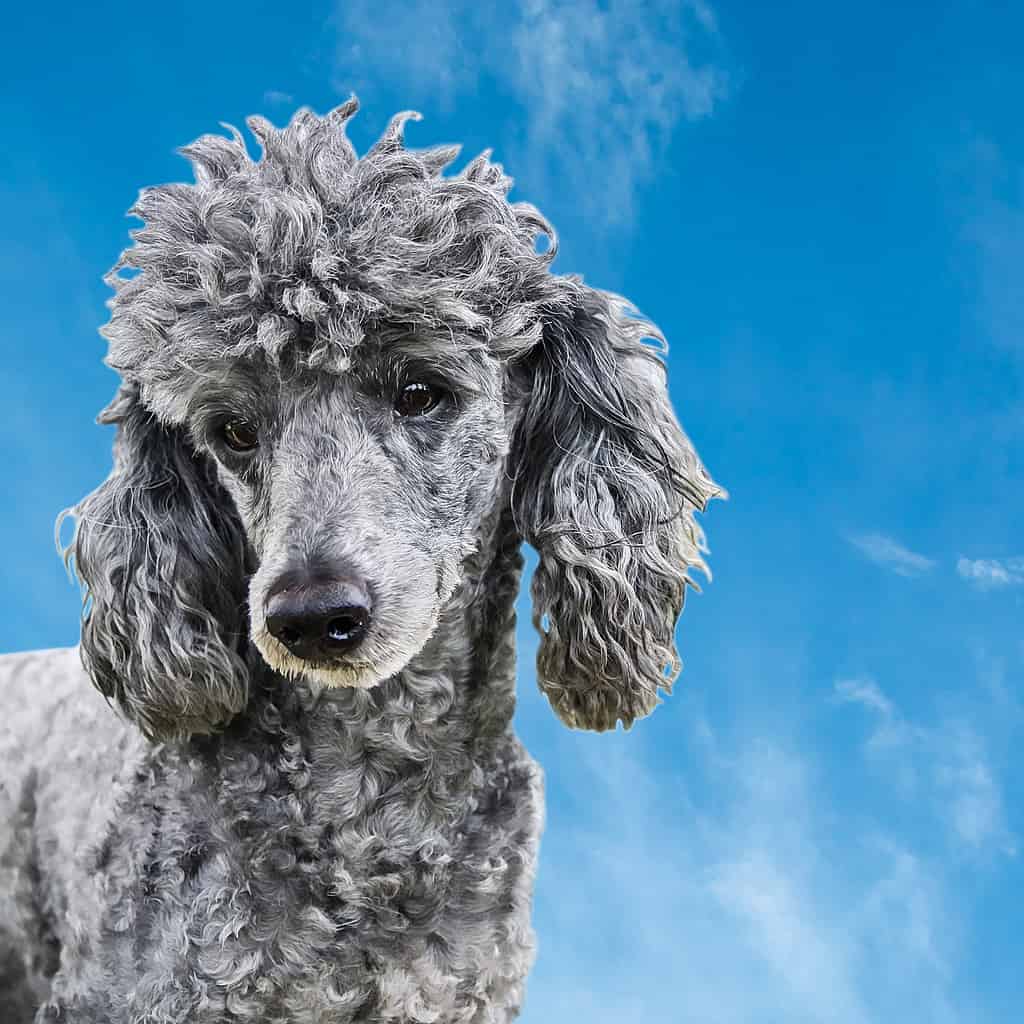
These poodles are born with black coats, but the two recessive genes cause their coats to fade as they age.
©iStock.com/HaiGala
8. Silver
Silver poodles are one of the more popular colors, but they are quite hard to find because it is not easy to breed this color, as it requires two recessive genes. These poodles are born with black coats, but the two recessive genes cause their coats to fade as they age, usually within the first or second year.
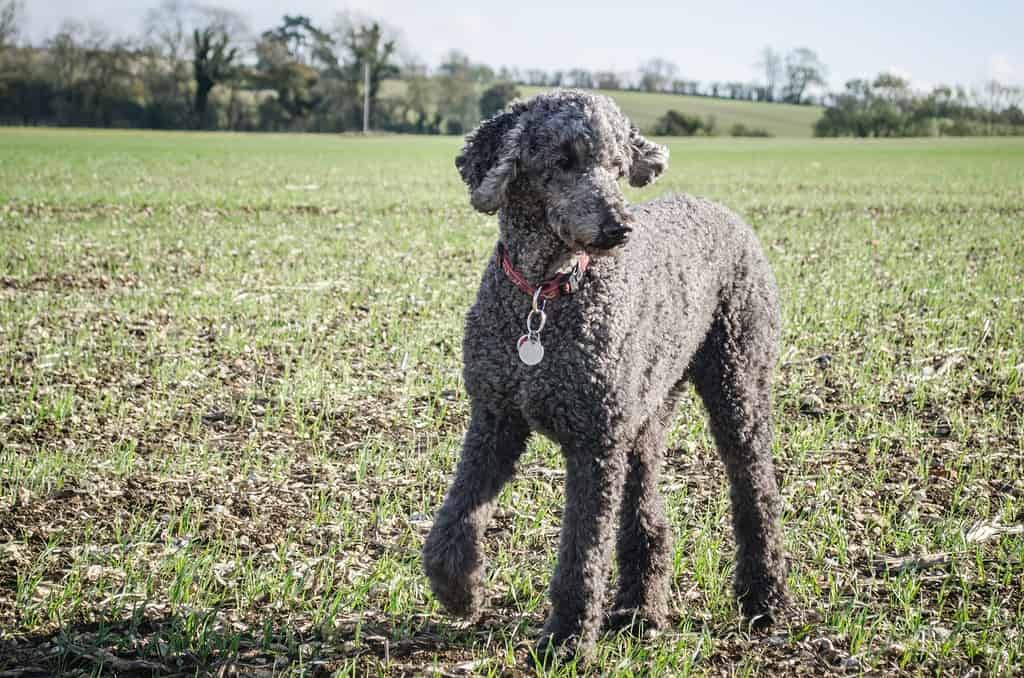
Silver poodles are one of the more popular colors, but they are quite hard to find because it is not easy to breed this color, as it requires two recessive genes.
©iStock.com/OneToRemember
9. White
Many people think the white poodle is the most common color. However, it places third because of its recessive gene. Breeders have to keep genetic anomalies out of the pool with special techniques to ensure a pure white litter. However, due to the controlled breeding, many white poodles are deaf. Furthermore, there is not only one shade of white. For example, the cream-colored poodle may appear white.
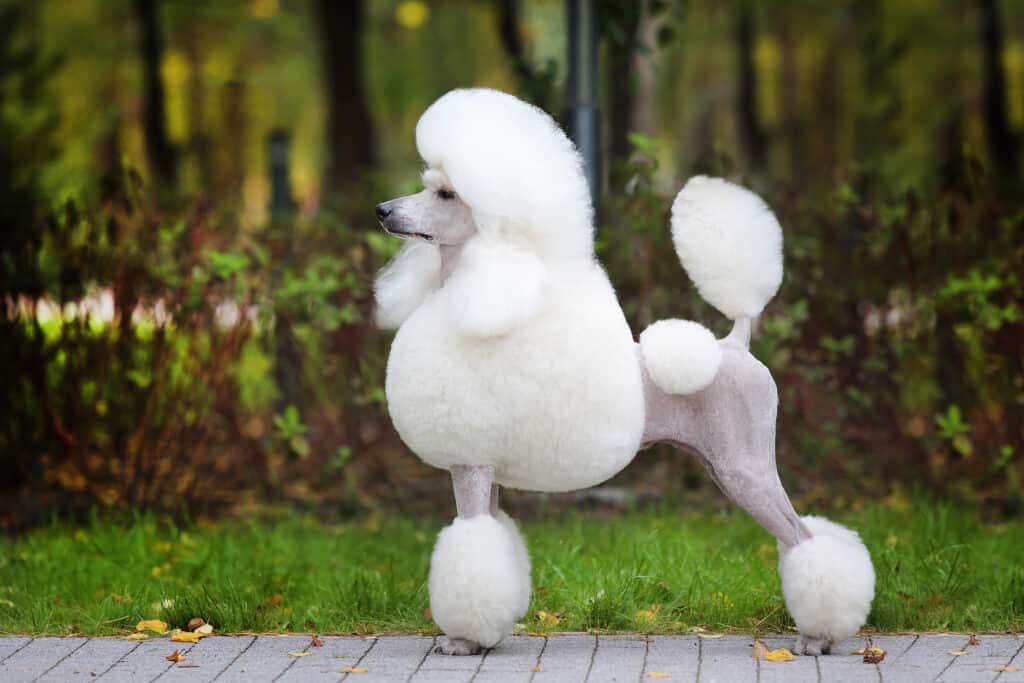
Breeders have to keep genetic anomalies out of the pool with special techniques to ensure a pure white litter.
©Dulova Olga/Shutterstock.com
10. Brown
One of the more common poodle colors is brown, thanks to its dominant gene. However, some brown poodles have a fading gene, which lightens their coat over time. Therefore, they are often mistaken for a café au lait or silver poodle.
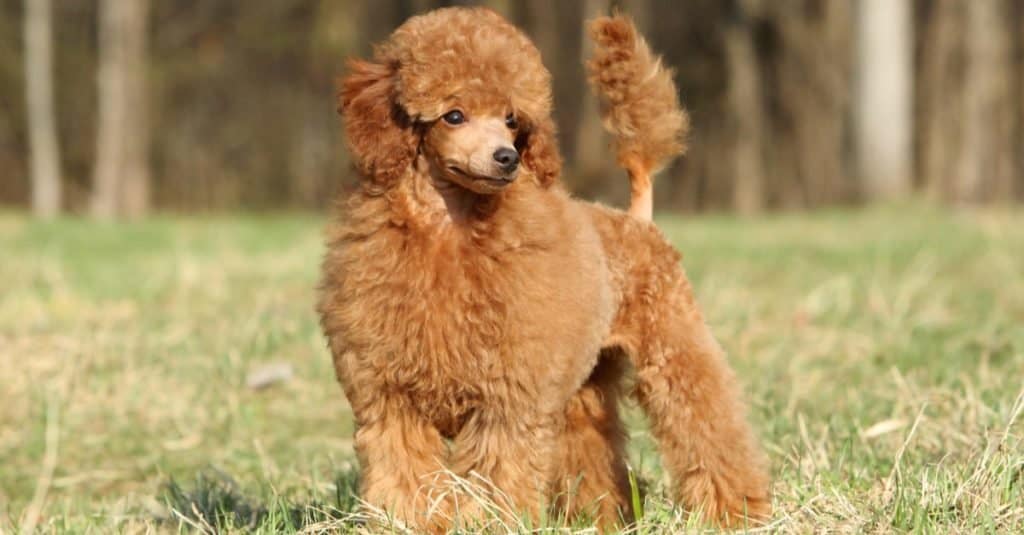
One of the more common poodle colors is brown, thanks to its dominant gene.
©Jagodka/Shutterstock.com
11. Black
Black is the most common of all poodle colors. This is due to the dominant gene found in these poodles. Darker tones are typically more prevalent, meaning they are likely to develop when mixed with lighter colors. However, dark poodles with a fading recessive gene will turn silver as they get older, so the black doesn’t always stick around.
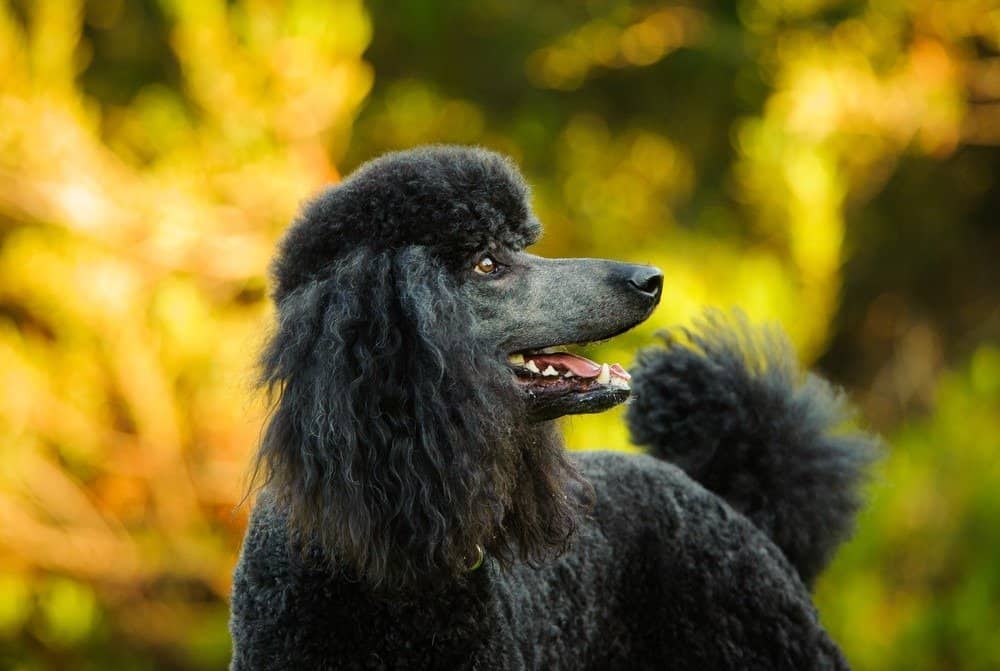
Black is the most common of all poodle colors.
©everydoghasastory/Shutterstock.com
Poodle History
While many think the poodle originated in France, it was first bred in Germany. In fact, researchers believe they possibly descended from the barbet. The breed was officially established in the 1800s, but there are records of dogs that looked like poodles before then. They derived their name from the German word “pudel,” which means splash or puddle.
These intelligent dogs started out as hunting dogs, as they were especially good at retrieving kills in water. However, traveling circuses or troupes soon realized how clever poodles were and started to train them as performers. Next, the French aristocracy took an interest in the breed, and poodles became companions to the elite.
The three varieties of poodles are some of the most popular dogs in the world. They are also used as service dogs, especially guide dogs for the blind and police dogs. Furthermore, they are great competitors in sports, from obedience and agility to herding sheep; these dogs can do it all.
Poodle Temperament
These dogs are lively, fun-loving, and active. As a result, they need owners who will dedicate much of their time to exercise and stimulation. In addition, poodles like to be the center of attention and may suffer from separation anxiety if left alone for long periods. If they do not get the attention they deserve, poodles will act out by barking or chewing. Poodles are loyal to their owners but can be aggressive towards strangers. Therefore, they require early training and socialization.
Ready to discover the top 10 cutest dog breeds in the entire world?
How about the fastest dogs, the largest dogs and those that are -- quite frankly -- just the kindest dogs on the planet? Each day, AZ Animals sends out lists just like this to our thousands of email subscribers. And the best part? It's FREE. Join today by entering your email below.
Thank you for reading! Have some feedback for us? Contact the AZ Animals editorial team.

